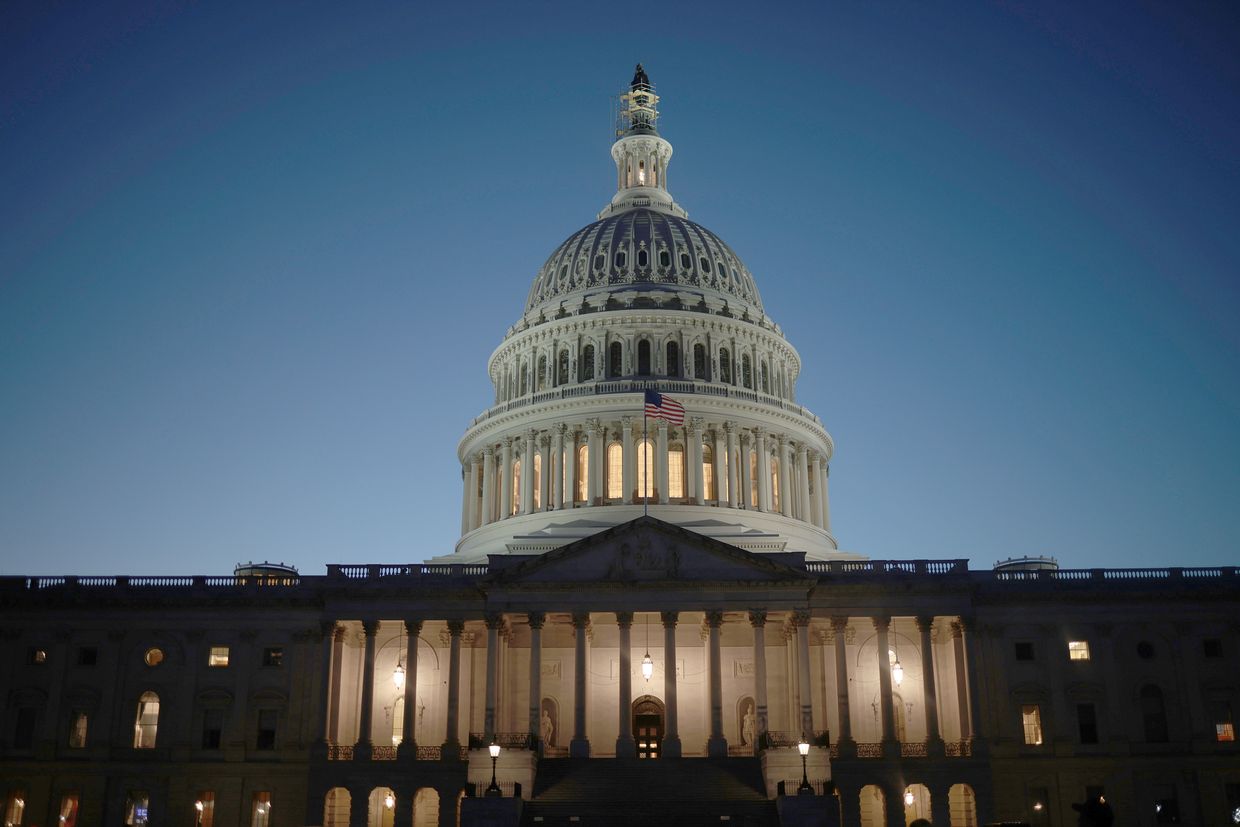 |
| AP PHOTO/EVAN VUCCI |
The big U.S. aid package for Ukraine and other allies that President Joe Biden signed Wednesday also allows the administration to seize Russian state assets located in the U.S. and use them for the benefit of Kyiv.
That could mean another $5 billion in assistance for Ukraine, coming from Russian Central Bank holdings that have already been frozen in the United States. The seizures would be carried out under provisions of the REPO Act, short for the Rebuilding Economic Prosperity and Opportunity for Ukrainians Act, that were incorporated into the aid bill.
But it’s not likely the U.S. will seize the assets without agreement from other members of the Group of Seven nations and the European Union.
WHAT IS THE DIFFERENCE BETWEEN FREEZING AND SEIZING?
The U.S. and its allies immediately froze $300 billion in Russian foreign holdings at the start of Moscow’s invasion of Ukraine. That money has been sitting untapped — most of it in European Union nations — as the war grinds on. But roughly $5 billion of it is located in the U.S.
The frozen assets are immobilized and can’t be accessed by Moscow — but they still belong to Russia. While governments can generally freeze property without difficulty, turning that property into forfeited assets that can be sold for the benefit of Ukraine requires an extra layer of judicial procedure, including a legal basis and adjudication in a court.
For more than a year, officials from multiple countries have debated the legality of confiscating the money and sending it to Ukraine
HOW QUICKLY COULD THIS HAPPEN?
The new U.S. law requires the president and Treasury Department to start locating Russian assets in the U.S. within 90 days and to report back to Congress within 180 days. A month after that period, the president will be allowed to “seize, confiscate, transfer, or vest” any Russian state sovereign assets, including any interest, within U.S. jurisdictions.
But the U.S. wants to keep consulting with global allies and act together, which is likely to slow down the process.
National security adviser Jake Sullivan said Wednesday the issue would be an important topic when leaders of the G7 countries meet in Italy in June, adding that “the ideal is that we all move together.” --->READ MORE HERE
 |
| Win McNamee/Getty Images |
The U.S. on April 20 became the first nation to adopt legislation green-lighting confiscating frozen Russian assets for Ukraine.
President Joe Biden signed the REPO Act alongside a $95 billion foreign aid bill that included $61 billion for Kyiv on April 24, setting the legal basis for liquidating immobilized Russian assets held in the U.S.
Since the West froze around $300 billion belonging to the Russian Central Bank (CBR) at the start of the full-scale invasion, discussions among the G7 countries about what to do with the assets have been divisive.
Some have argued that the liquidated assets should go to Ukraine’s reconstruction while others have pointed toward bolstering the country’s troubled war effort.
Legal barriers and lobbying from opponents have so far held up the transfer of funds to Ukraine. At the same time, Kyiv’s allies struggle to fund the war-torn country. Proponents have cited the assets as a clear solution.
The bill overcomes the main legal concern, Russia’s sovereign immunity, by paving the way for the Biden administration to confiscate the assets due to Russia’s violation of international law.
However, while the bill shows Washington’s support for repurposing Russian assets in response to Moscow’s illegal invasion of Ukraine, it does not guarantee confiscation of the assets. This is a decision for President Joe Biden.
“It’s a step in the right direction, but not yet a game changer,” Timothy Ash, a senior strategist at BlueBay Asset Management, told the Kyiv Independent.
In his opinion, the dial will only fully move forward once Biden seizes the assets, which could set a precedent for other countries. While the President signed the bill on April 24, he has not yet confirmed he will utilize the assets.
Russian assets in the U.S. are only a drop in the bucket, totaling approximately $4-5 billion. This barely scratches the surface of Ukraine’s $486 billion reconstruction bill or $100 billion annual war costs.
The act acknowledges that the majority of the assets are outside Washington’s jurisdiction and emphasizes the need for greater transparency in locating Russian assets in the U.S., asserting that financial institutions must submit information on Russian assets to the Treasury.
It also indicates that all Russian state assets, potentially including state companies, are subject to confiscation. This includes the CBR, the Russian Direct Investment Fund, the Russian Finance Ministry, and property and financial institutions owned by the Kremlin. Assets under diplomatic immunity cannot be touched. --->READ MORE HEREFollow links below to +++++relevant+++++ and related stories:
+++++Russia-Ukraine News LATEST UPDATES: (REUTERS) (AP) (NY POST) and (WSJ)+++++
+++++The REPO for Ukrainians Act Is Unnecessary, Costly, and Risky+++++
Now It’s Up to Europe to Take the Lead in Ukraine
How US and allies might use Russia's frozen assets to aid Ukraine
Drone coalition raises almost €500 million for Ukraine - Latvian Defense Ministry
Macron outlines his vision for Europe to become an assertive global power as war in Ukraine rages on
A Russian deputy defense minister is ordered jailed pending trial on bribery charges
More US aid will help Ukraine avoid defeat in its war with Russia. Winning is another matter
UK puts its defense industry on ‘war footing’ and gives Ukraine $620 million in new military aid
If you like what you see, please "Like" and/or Follow us on FACEBOOK here, GETTR here, and TWITTER here.

No comments:
Post a Comment